03. September, 2025delish0
The core of green manufacturing is a modern manufacturing model that comprehensively considers resource consumption and environmental impact while ensuring product function, quality, and cost. As a key equipment for the processing of thin film materials (such as BOPP, BOPET, CPP, lithium battery separators, etc.), the energy consumption of film slitting machine is directly related to the operating costs and environmental performance of production enterprises. Therefore, the development of its energy-saving technology has attracted much attention.
Here are some key directions in the development of energy-saving technology for film slitting machines:
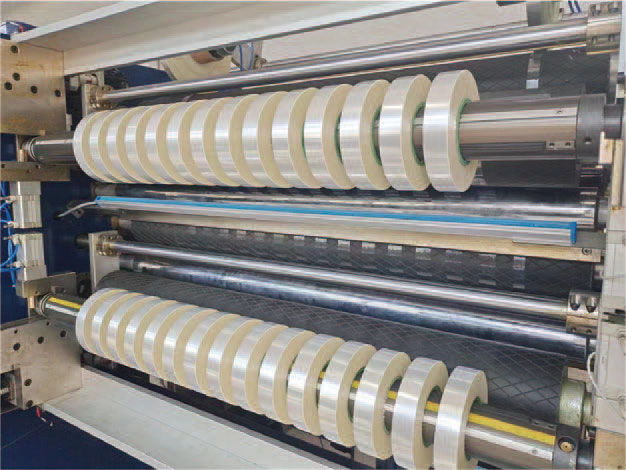
First, energy-saving technology for direct energy consumption
This type of technology is directly aimed at large energy consumers during the operation of slitting machines, mainly drive systems.
1. Application of high-efficiency motors and permanent magnet synchronous motors (PMSM).
◦ Traditional problems: Early slitting machines generally used ordinary asynchronous motors, which had low efficiency and higher energy consumption, especially at low speeds and light loads.
◦ Energy-saving technology: Ultra-efficient asynchronous motors or permanent magnet synchronous motors with IE4 and IE5 energy efficiency ratings. Permanent magnet synchronous motor has the advantages of high efficiency, high power density, and large low-speed torque, and the energy-saving effect is particularly significant in the slitting process of frequent start-stop and variable speed operation, which can save 10%-20%.
2. Popularization of intelligent servo drive system
◦ Traditional problems: Although traditional vector variable frequency drives are better than direct starting, there is still room for improvement in control accuracy and dynamic response.
◦ Energy-saving technology: The main units of modern high-end slitting machines (such as unwinding, traction, and winding) generally adopt servo drive systems.
▪ Energy Feedback Function: The motor is in a power generation state during unwinding brake and rewinding tension control. Conventional drives consume this energy in the form of heat through brake resistance, resulting in waste. The servo system with energy feedback unit can feed this part of the regenerated energy back to the power grid for other equipment to use, and the energy-saving effect is very obvious, especially in high-speed, high-tension slitting occasions, which can recover a large amount of energy.
▪ On-demand energy supply: The servo system precisely controls the torque and speed, avoiding the phenomenon of "big horse-drawn carts", providing precise energy according to actual process needs, and reducing reactive power losses.
3. Selection of energy-saving components
◦ Low-power PLC, human-machine interface (HMI), sensors and LED lighting are used to reduce the standby and operating power consumption of the whole machine in detail.
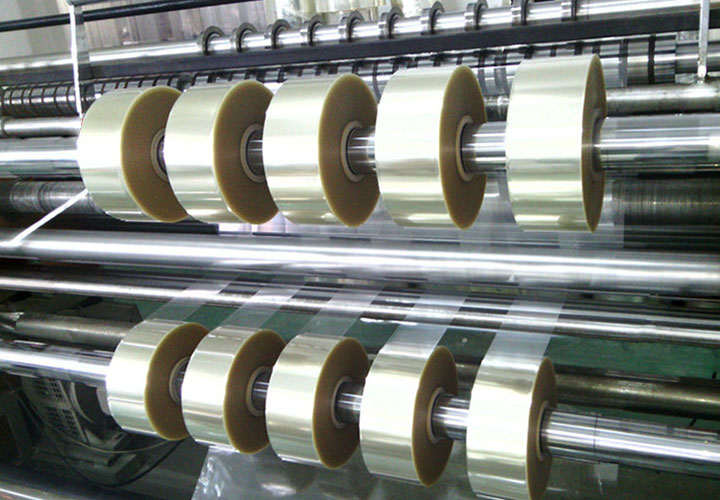
Second, indirect energy savings achieved by improving process and efficiency
Increasing production efficiency, reducing scrap rates, and optimizing processes are the most effective ways to save energy in themselves.
1. Respond to the trend of thinning and speed
◦ Challenges: Thinner film materials (such as lithium battery separators) and higher slitting speeds (up to more than 1000m/min) put forward extreme requirements for the dynamic control accuracy and stability of equipment.
◦ Energy-Efficient Technology:
▪ High-precision tension control system: Adopt a fully automatic tension control system (such as floating roller type + tension sensor closed-loop control), equipped with a high-response servo motor to ensure extremely stable tension throughout the whole process from starting, acceleration, steady, deceleration to stop. This minimizes film stretching, fracture, and wrinkling due to tension fluctuations, directly reducing scrap rates and energy consumption for downtime restarts.
▪ Advanced rewinding and unwinding technology: such as dual-station automatic winding and pre-drive receiving technology, it realizes continuous production without stopping the machine, avoiding the huge energy loss caused by frequent start and stop of the main motor. The intelligent switching and combination of central and surface coiling can also adapt to different material characteristics and improve efficiency.
2. Predictive maintenance and digital twins
◦ Traditional Issues: Sudden equipment failures or loss of accuracy lead to unplanned downtime and production defects.
◦ Energy-Efficient Technology:
▪ Condition monitoring: Real-time monitoring of the health status of critical components (such as bearings and gearboxes) through vibration sensors, temperature sensors, etc., to achieve predictive maintenance and avoid catastrophic failures and resulting huge production losses and energy consumption.
▪ Digital Twin: Build a digital model of the slitting machine in the virtual space, simulate and optimize process parameters (such as tension curves, speed curves) before actual production to find the optimal and most energy-saving production scheme, and reduce the sample loss and energy consumption of the physical machine.
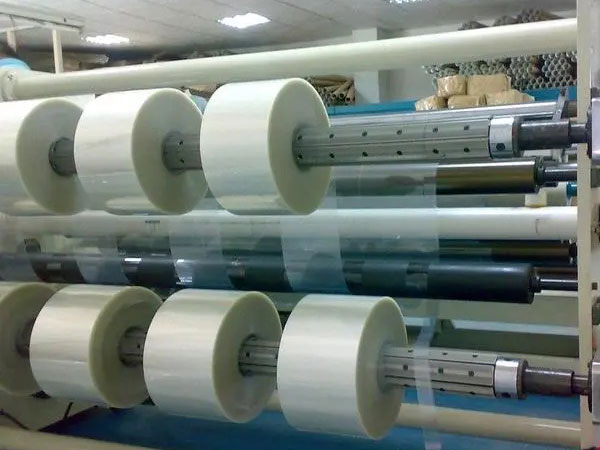
Third, optimization of structural design and material application
1. Lightweight design
◦ Topology optimization of components such as frames and rollers, or lightweight materials such as high-strength aluminum alloys to reduce the moment of inertia of moving parts, while maintaining rigidity and strength. This means less acceleration energy is required to drive them and less load on servo motors, resulting in lower energy consumption.
2. Application of low friction resistance
◦ Use high-performance, low-resistance sealed bearings.
◦ Ensures extremely high dynamic balancing accuracy of all guide and traction rollers, reducing vibration and additional resistance during high-speed operation.
◦ High-precision rollers with mirror polished, chrome or ceramic coating to reduce the coefficient of friction with the film surface.
Fourth, thermal energy management and recovery
1. Slitting knife heat management
◦ During high-speed slitting, the friction between the tool and the film generates heat, affecting the quality of the slitting and tool life. Traditional air cooling may be more energy-intensive. Newer tool materials and cooling designs, such as high-efficiency heat exchangers, can manage heat more efficiently, reducing the energy consumption of additional cooling.
2. Thermal energy integration in the workshop environment
◦ Although the slitting machine itself is not a major consumer of thermal energy, the power returned by it and the waste heat of the compressed air system (for pneumatic components) can be included in the energy management system of the entire plant for overall planning and recycling.
Summary and development trend
| Technical field | Traditional issues | Energy-saving technology | Energy saving effect and significance |
| Drive system | The asynchronous motor has low efficiency and wastes braking energy | Permanent magnet synchronous motor, servo drive + energy feedback | direct energy saving of 10%-30%, improving control accuracy |
| Process control | Large tension fluctuations, high scrap rates, and frequent downtime | High-precision automatic tension control, automatic wind change | Indirect energy savings (waste reduction), improved yield and OEE |
| Structural design | The components are bulky, have high inertia and high frictional resistance | Lightweight design, low drag bearings and rollers | Reduce basic operating energy consumption and improve dynamic response |
| Intelligent O&M | Unplanned downtime, production interruption | Predictive maintenance, digital twin process optimization | Ensure continuous and efficient production and avoid energy and air consumption |
The future development trend is integration and intelligence. The film slitting machine will no longer be an isolated device, but will serve as a node in the smart factory. Through Internet of Things (IoT) technology, the energy consumption data and production data of all slitting machines are uploaded to the manufacturing execution system (MES) and energy management system (EMS) in real time, and the production schedule and energy distribution of the whole plant are continuously optimized through big data analysis, so as to achieve maximum energy saving at the system level.
All in all, the energy-saving technology of film slitting machines in the context of green manufacturing is developing from the initial energy saving of a single component to today's comprehensive energy-saving solutions of mechatronics, sensing, drive, control and data analysis, with the ultimate goal of improving product quality and production efficiency while minimizing energy consumption per unit of output value.



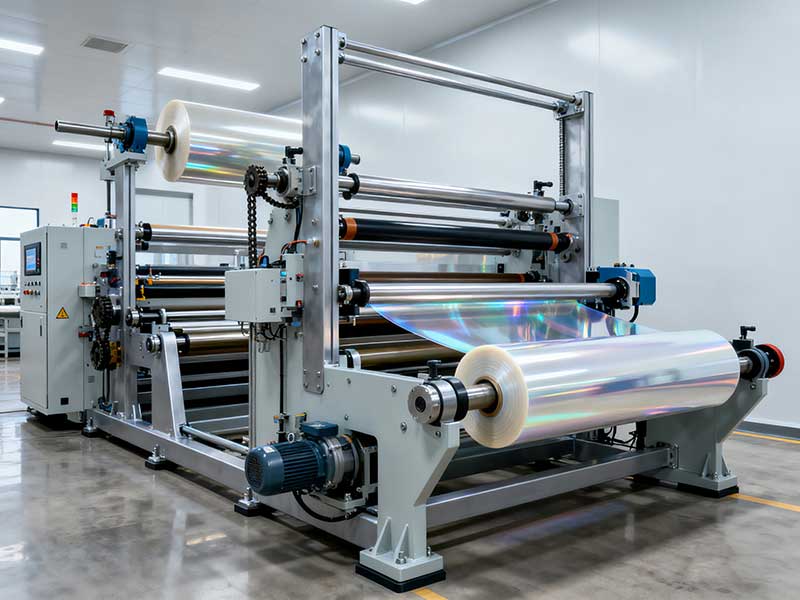
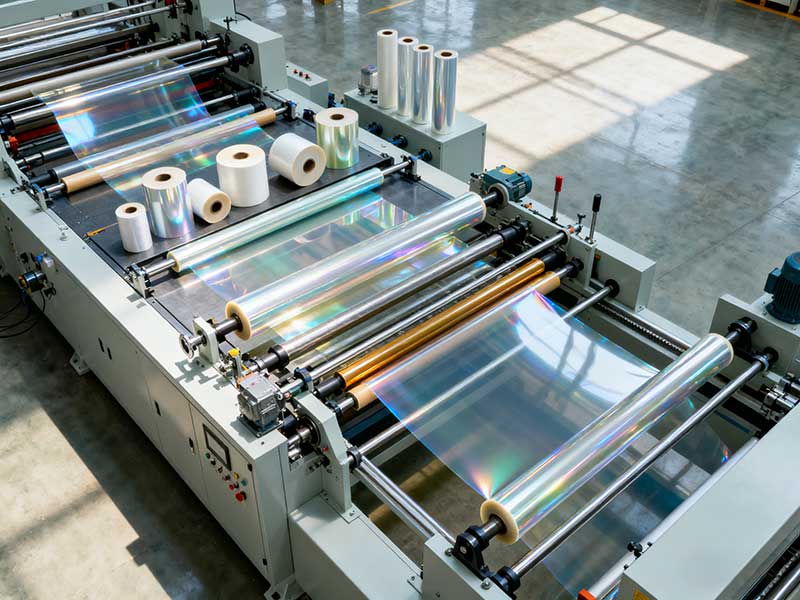
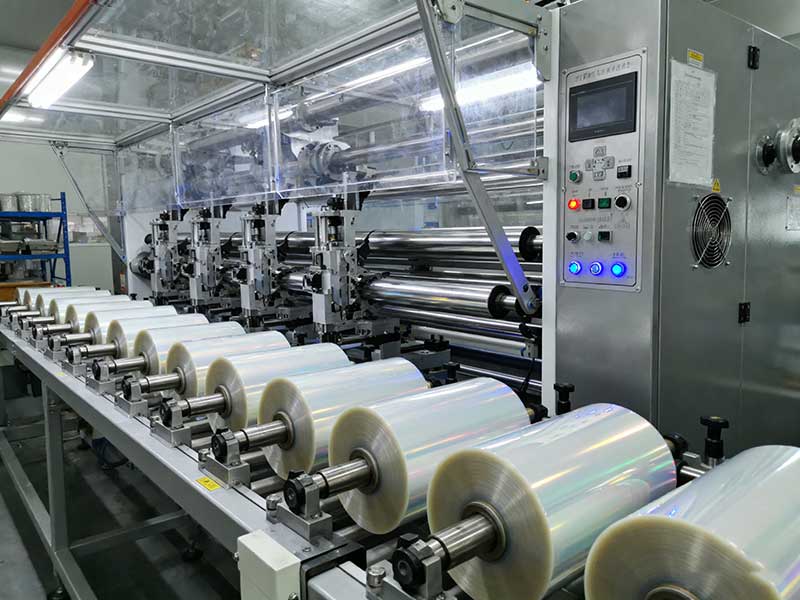

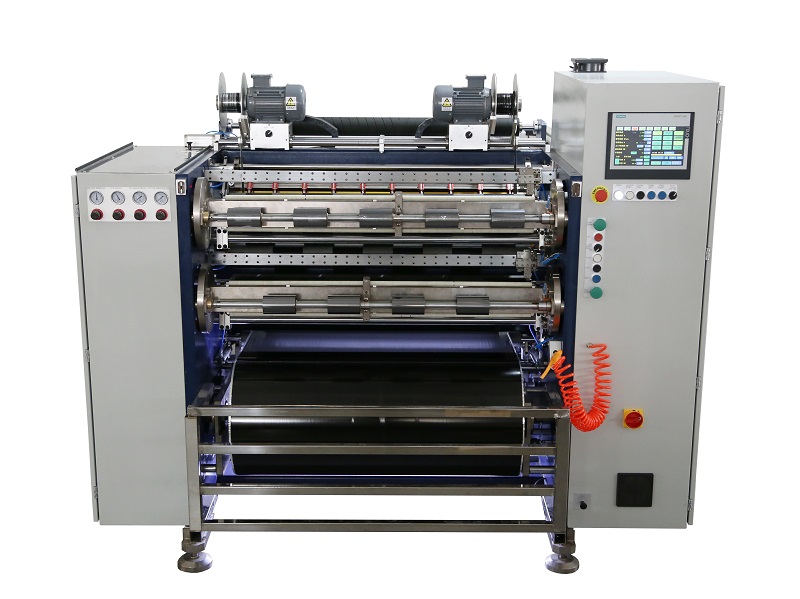 Fully Automatic TTR Slitter RSDS8 Plus
Fully Automatic TTR Slitter RSDS8 Plus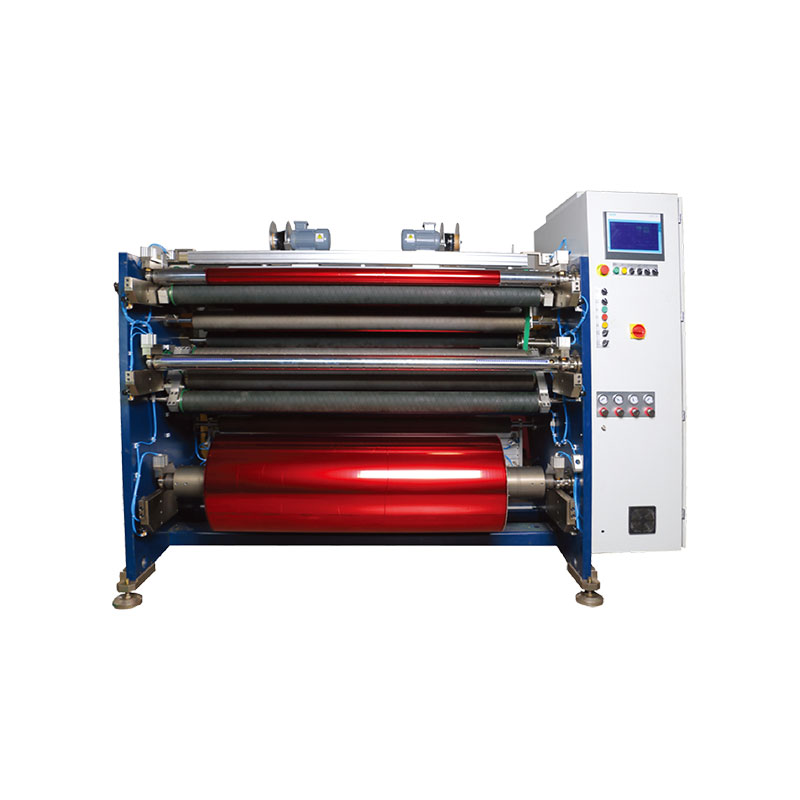 Hot Stamping Foil Slitter 1600mm
Hot Stamping Foil Slitter 1600mm Hot Stamping Foil Slitter (4 Shafts)
Hot Stamping Foil Slitter (4 Shafts)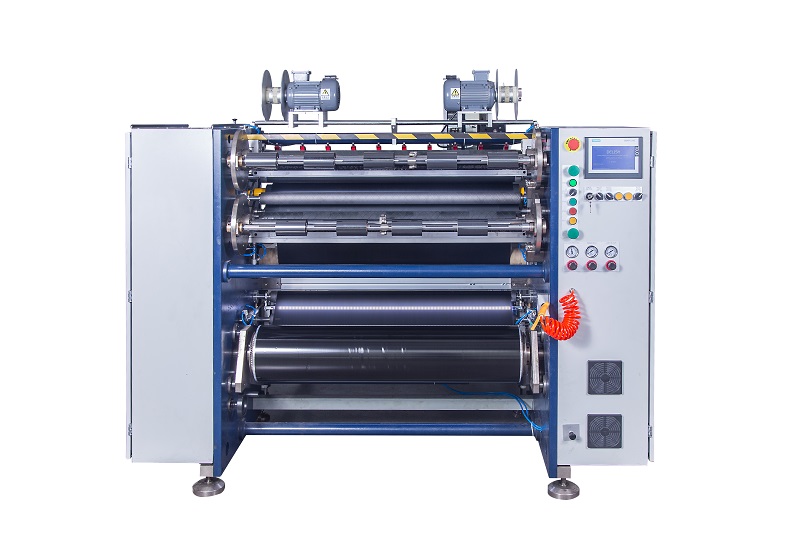 Semi-Auto TTR Slitter RSDS2 Plus
Semi-Auto TTR Slitter RSDS2 Plus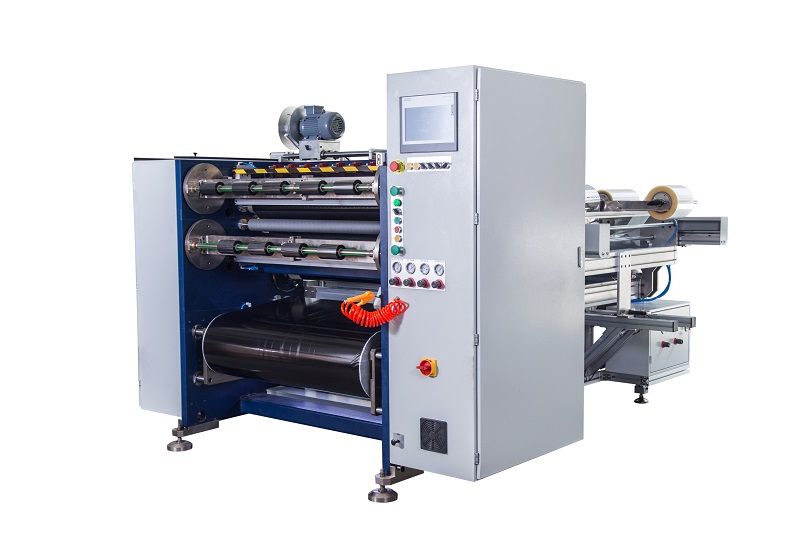 Semi Automatic TTR Slitter RSDS5 Plus
Semi Automatic TTR Slitter RSDS5 Plus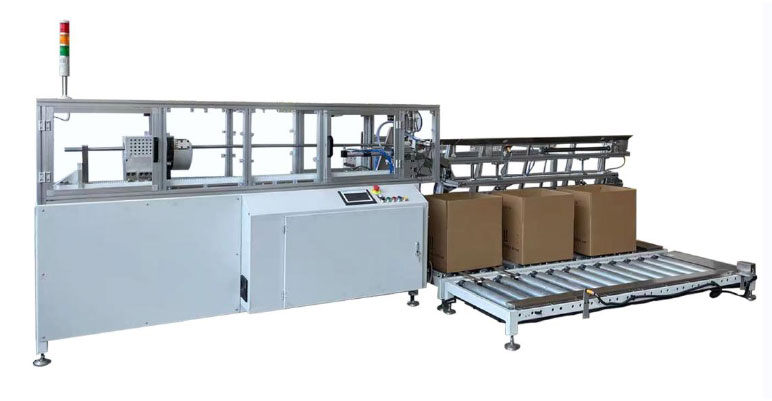 Auto Paper Core Cutter
Auto Paper Core Cutter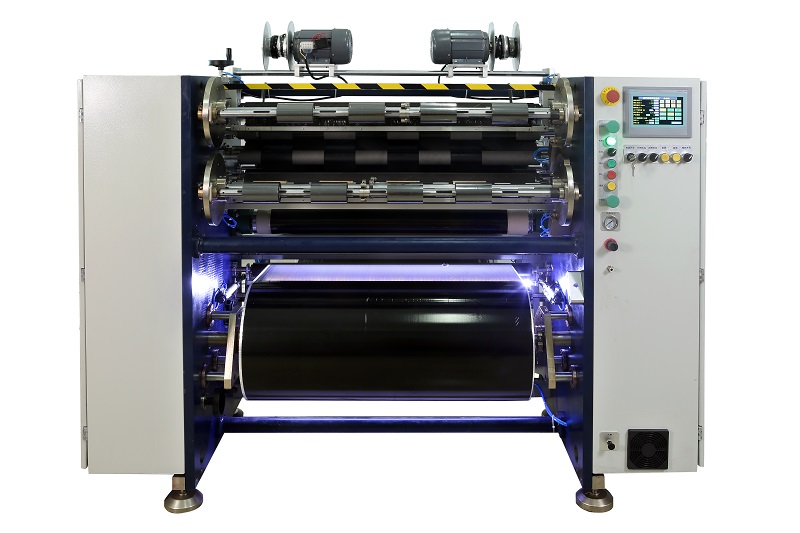 Manual TTR Slitter RSDS2
Manual TTR Slitter RSDS2 Manual Paper Core Cutter
Manual Paper Core Cutter





